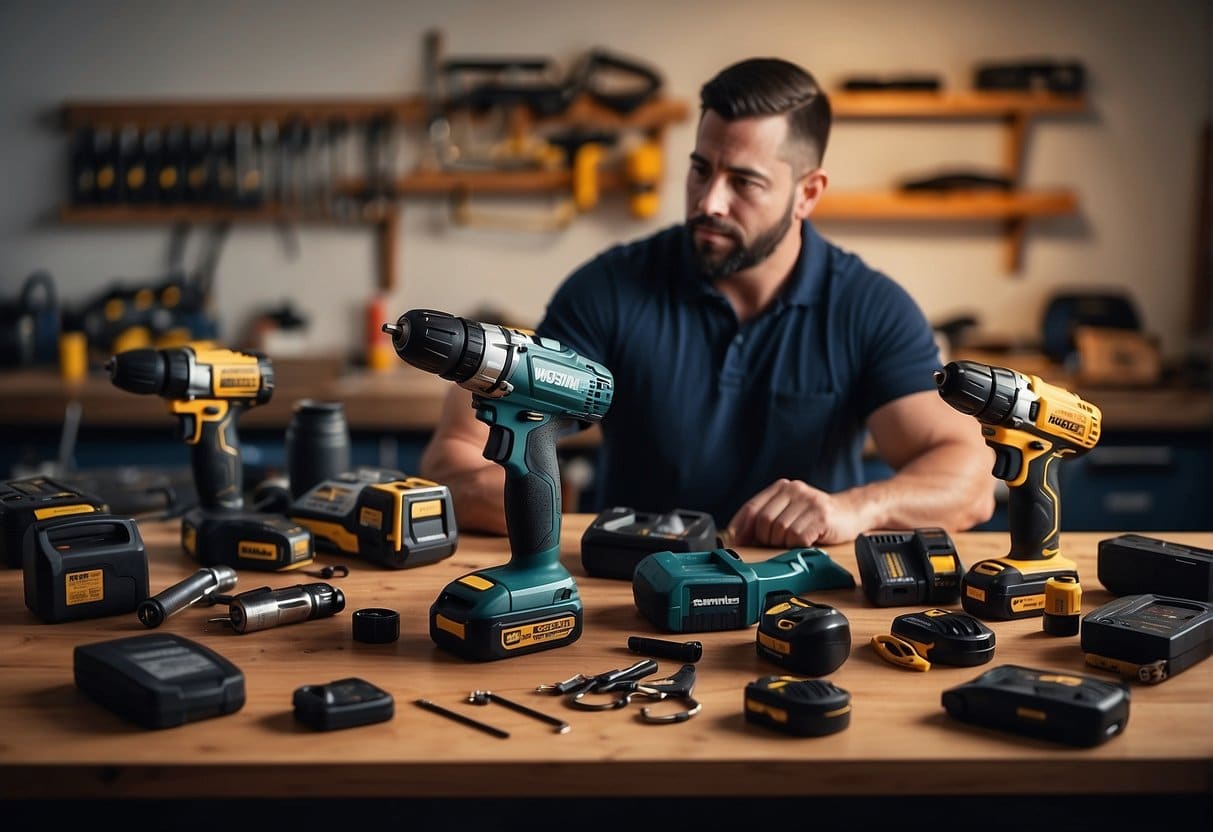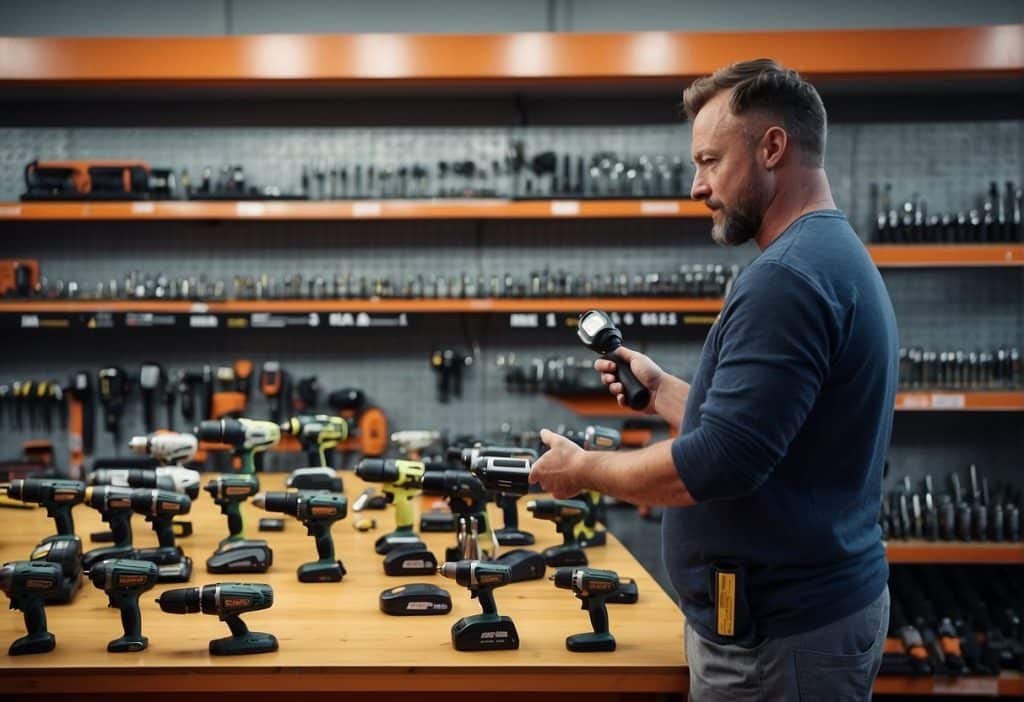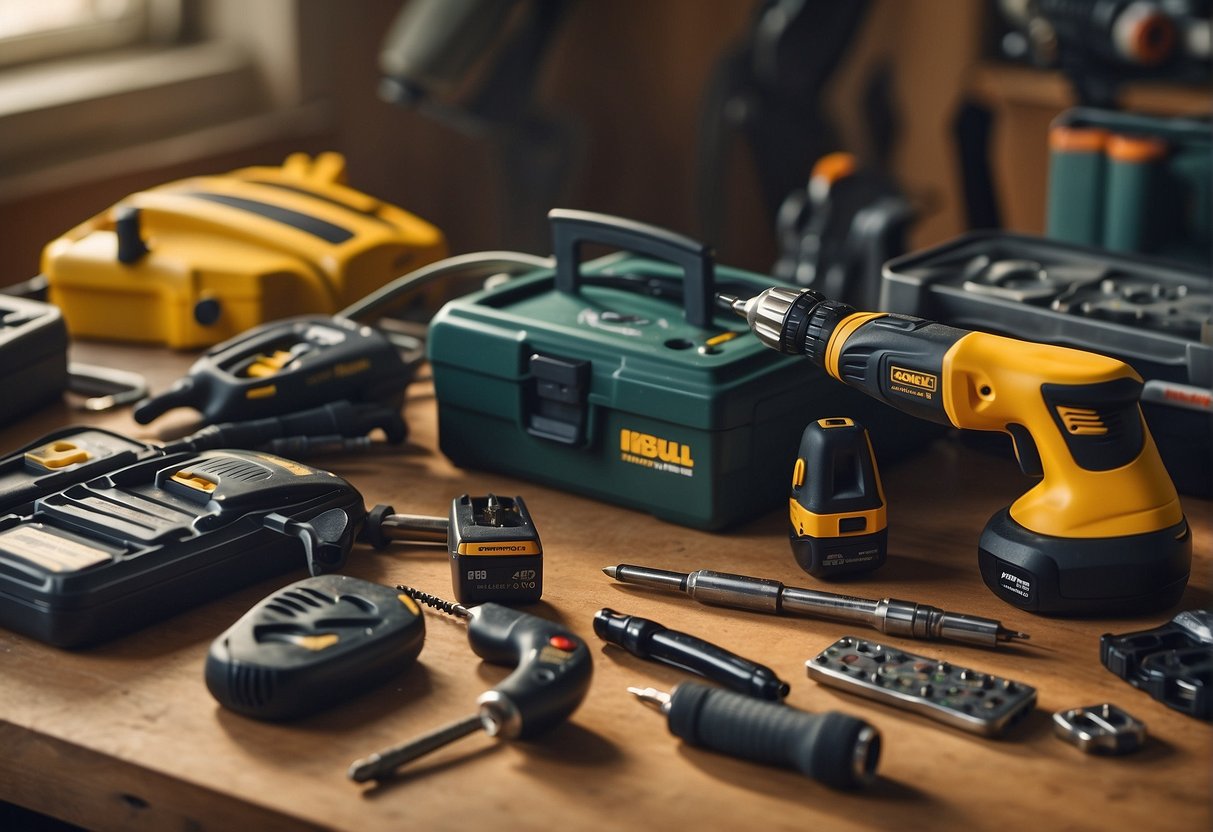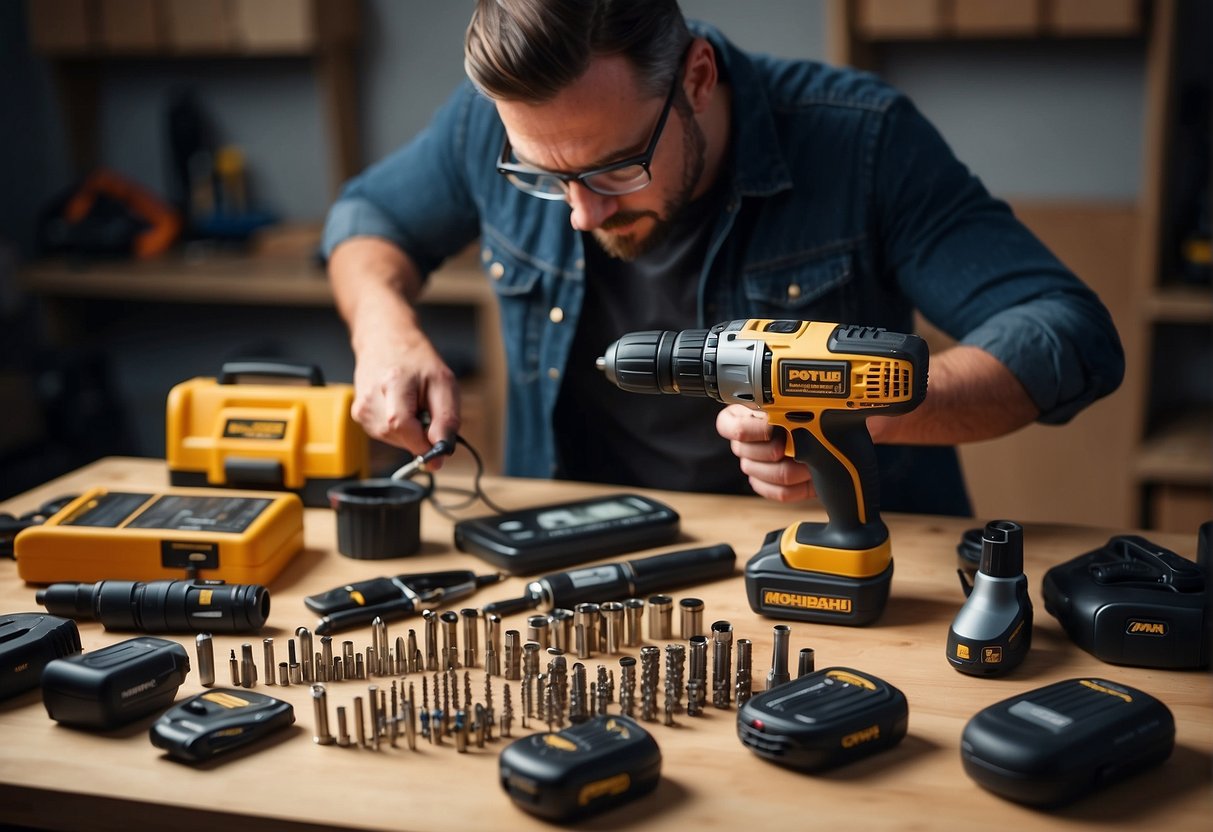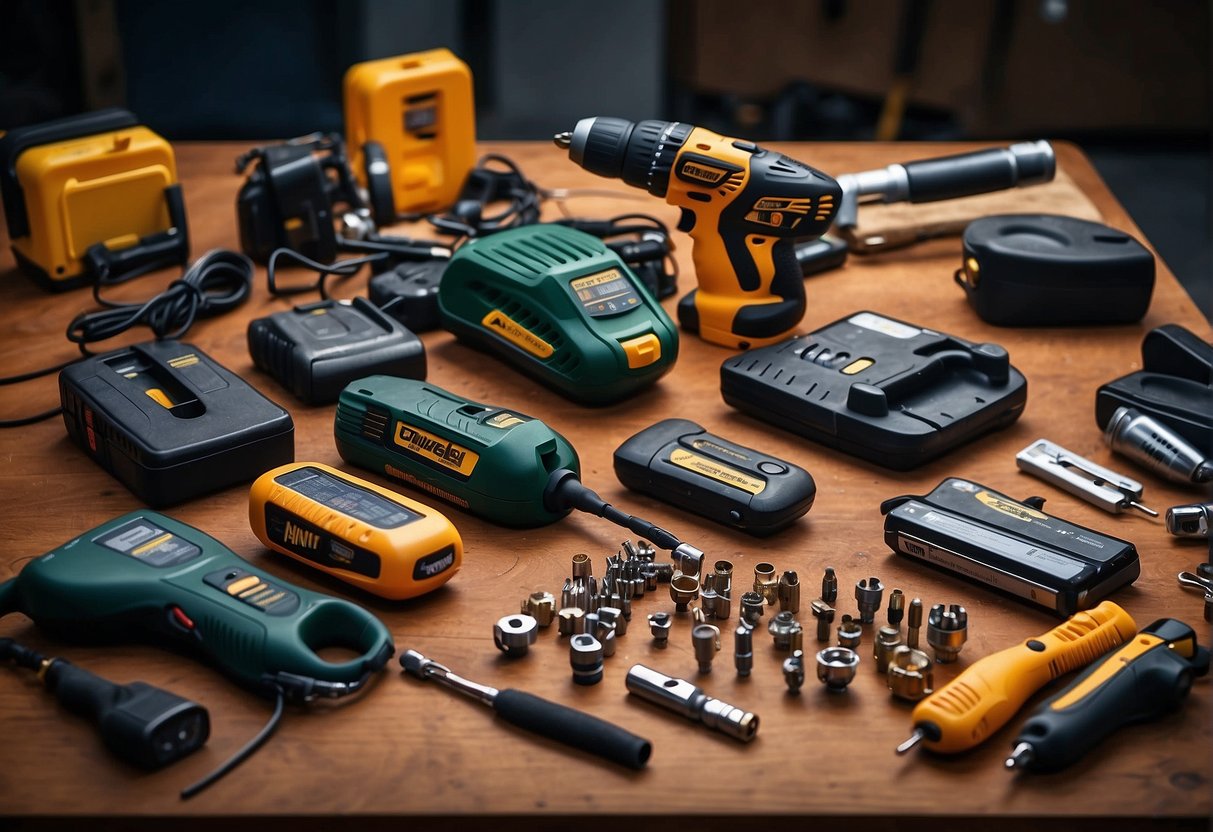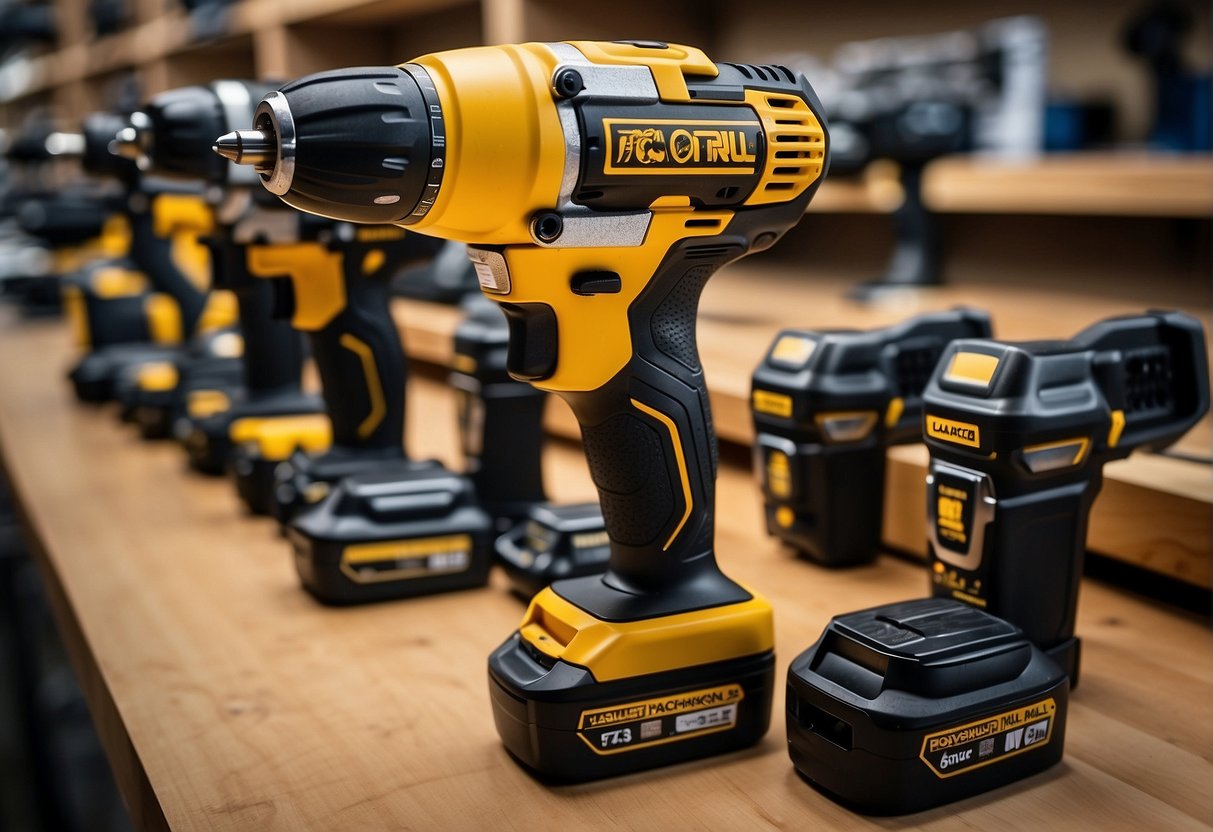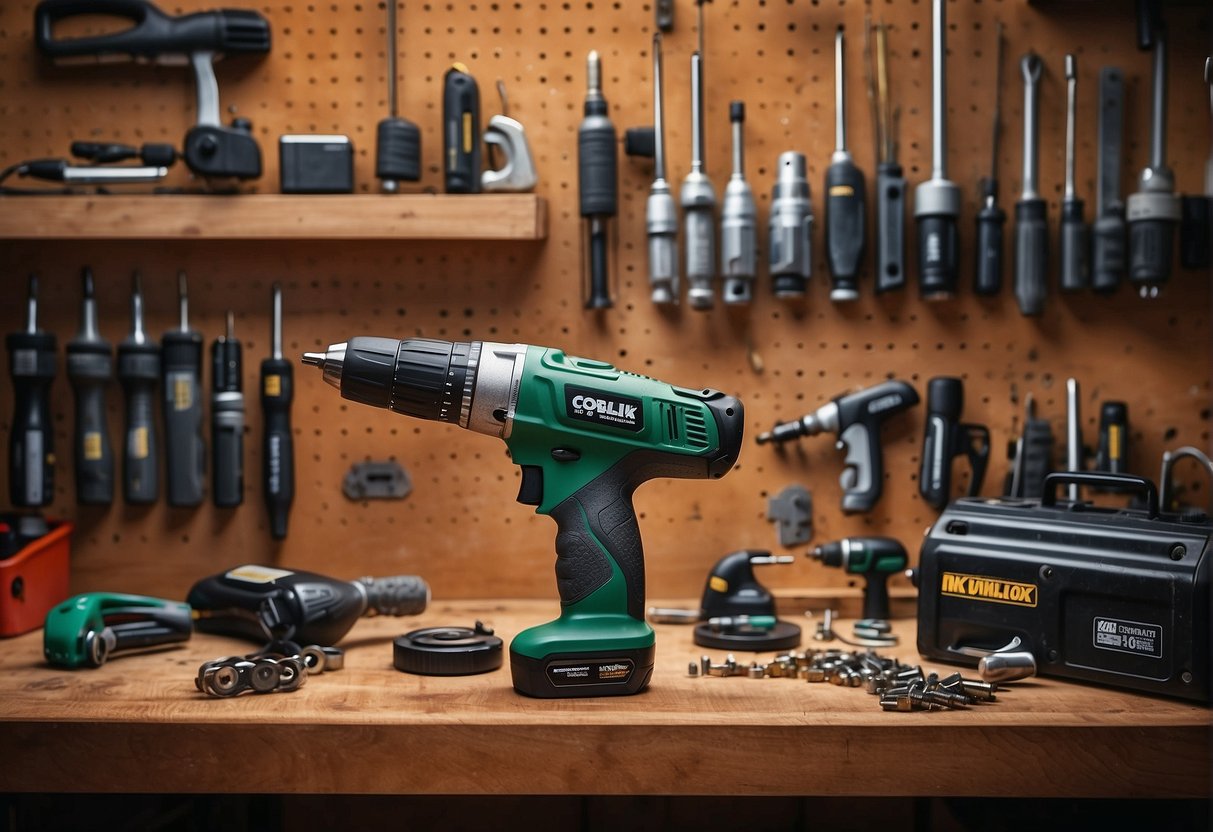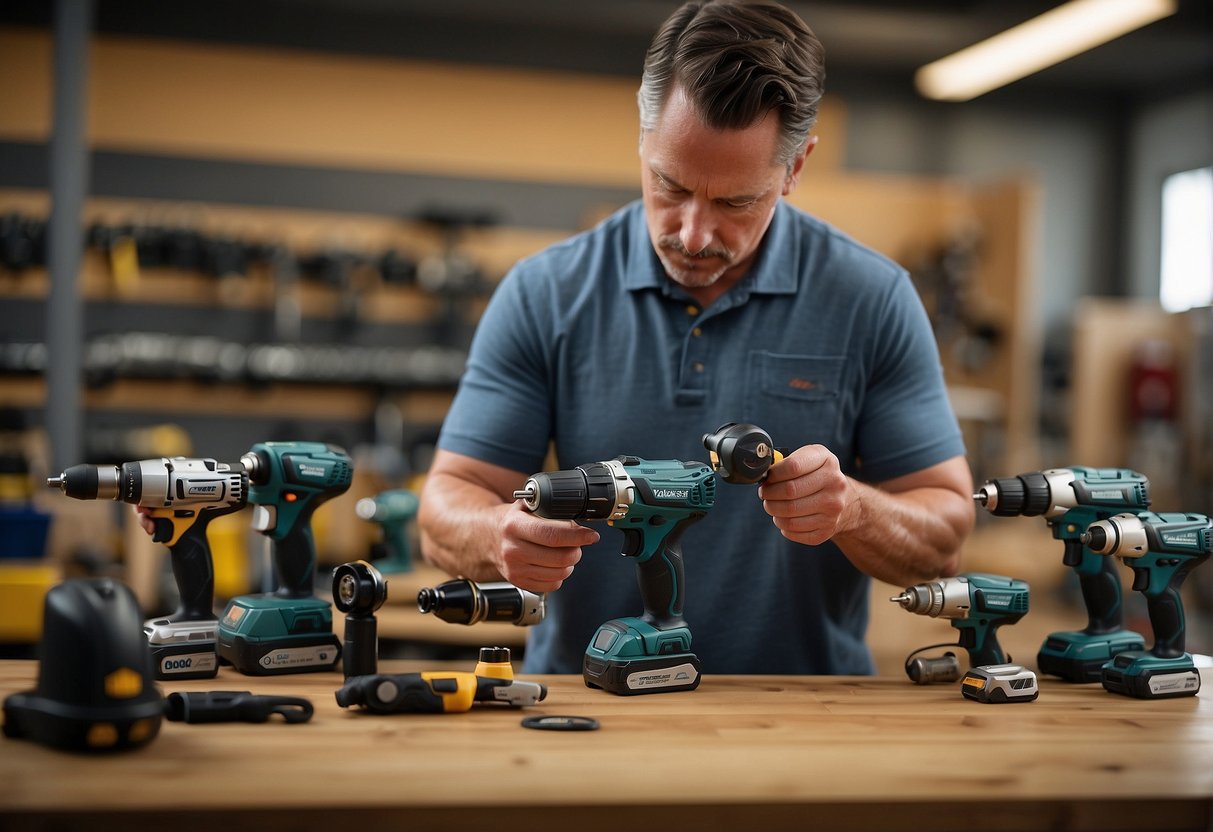Selecting the best cordless drill for your needs can be a significant challenge given the vast number of options available on the market. A cordless drill is a staple tool in both the household and professional toolbox due to its convenience and versatility. Whether you’re assembling furniture, building a deck, or performing delicate repairs, having the right cordless drill makes all the difference. It’s essential to consider how often you’ll use the drill, the types of projects you’ll undertake, and your budget.
There are many factors to consider when choosing a cordless drill, including power, battery life, weight, and additional features that enhance the tool’s usability. New technologies have also introduced more efficient motors and longer-lasting batteries, expanding the possibilities for what cordless drills can accomplish. It’s imperative to evaluate the specifications of each model against your intended tasks. For instance, a lightweight drill might be perfect for light household tasks, while more robust models will better serve frequent use on tougher materials.
Key Takeaways
- Evaluating personal needs and project requirements is crucial in selecting the appropriate cordless drill.
- Key specifications such as power, battery life, and weight impact the drill’s performance and suitability.
- Advanced features and brand reputation influence the overall value and reliability of the cordless drill.
Understanding Cordless Drills
Cordless drills are versatile tools essential for a variety of tasks ranging from simple home repairs to complex professional jobs. Understanding the different types available and their features is crucial for making an informed purchase.
Different Types of Cordless Drills
Cordless Drill/Driver: This is the most common type of cordless drill, designed for drilling holes and driving screws. It is suitable for a wide range of applications, from woodworking to light metalwork.
- Impact Driver: Unlike a standard drill/driver, an impact driver uses both rotation and concussive blows to drive screws with greater force. It is particularly useful for long screws or when working with hard materials.
- Hammer Drill: A hammer drill adds a hammering action to the drilling process, making it ideal for drilling into masonry or concrete.
- Cordless Hammer Drill: Combining the features of a drill/driver with a hammer drill, a cordless hammer drill offers the convenience of drilling and hammering capabilities without the need for a power cord.
Key Features of Cordless Drills
- Power and Voltage: Typically measured in volts (V), higher voltage means more power and torque, with common ratings including 12V, 18V, and 20V.
- Speed and Torque Settings: Adjustable speed settings allow for greater control over the drilling process, and multiple torque settings help prevent overdriving screws.
- Battery Life and Type: Battery life is crucial for uninterrupted work, with lithium-ion batteries being the standard due to their long life and quick charging times.
- Chuck Size: The chuck holds the drill bit in place, with sizes such as 3/8-inch (common for light tasks) and 1/2-inch (for heftier jobs).
- Ergonomics and Weight: A well-designed grip and balanced weight distribution can reduce fatigue during extended use.
- Additional Features: LED lights for visibility, brushless motors for efficiency, and belt clips for portability are valuable features that enhance the usability of cordless drills.
By considering these types and features, one can select a cordless drill that best fits their specific needs and project requirements.
Determining Your Needs
Before choosing a cordless drill, one should consider the types of materials they will be drilling and the variety of projects they intend to undertake.
Drilling Materials
- Wood: Suitable for home improvement and woodworking, requiring drills with moderate torque and speed.
- Metal: Demands a drill with higher torque and sturdy construction to handle the resistance.
- Masonry: A hammer drill function is essential for drilling into brick and concrete.
- Drywall: Requires a drill with fine speed control to avoid damaging the material.
- Plastic: Typically requires lower speed to prevent melting or cracking.
Project Types
- Construction: Opt for a powerful drill capable of handling a variety of robust materials and long run times.
- Home Improvement: A versatile and easy-to-handle drill is preferred for diverse tasks around the house.
- Remodeling: Select a drill that offers a balance of power and precision for tasks ranging from installing fixtures to building furniture.
- Woodworking: Look for drills with excellent speed variability and control for intricate work on various woods.
Key Specifications to Consider
When choosing a cordless drill, it’s crucial to assess the battery power, torque and speed capabilities, and the chuck features, as these directly influence the tool’s performance and suitability for specific tasks.
Battery Power and Life
Battery Power: Cordless drills are commonly powered by lithium-ion batteries, appreciated for their long life and ability to hold a charge. The voltage of the battery indicates the power level, with common sizes ranging from 12V to 20V for household tasks and higher for more demanding work.
- Voltage (V): Ranges from 12V (light-duty) to 20V+ (heavy-duty)
- Battery Capacity (Ah): Higher ampere-hours (Ah) usually translate to longer run times. Look for 2.0 Ah to 5.0 Ah batteries to balance weight and endurance.
Run Time: Consider drills that offer long battery life to minimize interruptions. Some models come with additional batteries or fast chargers to extend run time effectively.
Torque and Speed Settings
The drill’s capability to handle different materials is determined by its torque and speed.
- Torque: Measured in Newton-meters (Nm), higher torque is crucial for driving screws into tough materials.
- Speed Settings: Variable speed options give control over the drill speed, which is measured in revolutions per minute (RPM). A drill that can reach a maximum speed of 1,000 RPM or more provides versatility for different drilling and driving needs.
Chuck Size and Type
Chuck Size: This determines the size of the drill bit that can be used. Sizes typically range from 1/4 inch to 1/2 inch, with the latter being a common choice for its compatibility with a wide range of bit sizes.
- 1/4 inch: For light-duty tasks and precision work
- 1/2 inch: For general use and heavier tasks
Chuck Type: Keyless chucks allow for quick and easy bit changes without additional tools. They are standard on most modern cordless drills and are a convenient feature to consider.
- Keyless Chuck: Allows tool-free bit changes, enhancing efficiency.
Advanced Features and Technologies
When selecting a cordless drill, considering advanced features and technologies can significantly enhance both performance and ease of use. These elements are essential for efficient operation and precise control during various drilling and driving tasks.
Brushless Motors
Brushless motors are a cutting-edge technology in the realm of cordless drills. They boast higher efficiency and require less maintenance than traditional brushed motors. Brushless motor designs enable the tool to auto-adjust the power output based on the task, resulting in longer battery life and improved performance.
Adjustable Settings
Modern cordless drills offer a variety of adjustable settings that cater to the needs of each individual project. The variable speed trigger allows users to control the drill speed, which is crucial for tasks requiring precise control. Torque control is managed by an adjustable clutch with multiple clutch settings, providing users the ability to select the ideal torque for different screw sizes and materials to prevent over-driving or stripping.
Smart Controls and Ergonomics
Smart controls in a cordless drill can include features like Bluetooth connectivity to monitor tool performance and battery levels. The ergonomic design is another vital factor, ensuring comfort during prolonged use. Drills with a T grip are known to distribute weight evenly which reduces wrist strain. Additionally, these smart designs enhance stability, making it easier to maintain control of the tool at all times.
Evaluating Brands and Models
When choosing a cordless drill, it’s crucial to consider the track record of manufacturers and to scrutinize how various models stack up against one another.
Reputable Manufacturers
Several manufacturers have established themselves as leaders in the cordless drill market. DeWalt, Bosch, and Makita are well-known for their durable and reliable tools. These brands cater to both professionals and DIY enthusiasts. Ryobi and Black+Decker are often recognized for their value and suitability for casual or light use. Brands like Craftsman, Milwaukee, and Skil provide a balance of quality and affordability. Other noteworthy brands include Ridgid, Porter-Cable, Worx, and Avid Power, each offering a range of products that target different user needs and price points.
Comparison of Popular Models
Examining popular models from these brands involves looking at specifications and features such as battery life, torque, and speed settings. For instance, DeWalt’s high-performance drills often boast long-lasting batteries and robust construction, suited for demanding jobs. Makita drills might offer a compact design with brushless motors for efficient power usage. Contrastingly, Black+Decker models are generally more cost-effective and could be optimal for light-duty tasks. Below is a table comparing key features of some popular models:
| Brand/Model | Battery Voltage | Max Torque | Speed Settings | Brushless Motor |
|---|---|---|---|---|
| DeWalt DCD791D2 | 20V | 70 Nm | 2 | ✓ |
| Makita XFD10R | 18V | 54 Nm | 2 | ✗ |
| Bosch PS32-02 | 12V | 30 Nm | 2 | ✓ |
| Ryobi P252 | 18V | 50 Nm | 2 | ✗ |
| Black+Decker LDX120C | 20V | 25 Nm | 1 | ✗ |
As technology progresses, features like Bluetooth connectivity and battery interchangeability between tools become more prevalent and may factor into your decision. For high-end use, Milwaukee offers advanced technology and reliability, but if budget is a concern, Skil and Porter-Cable provide cost-effective alternatives with satisfactory performance.
Accessories and Attachments
When choosing a cordless drill, the accessories and attachments available can greatly enhance its versatility and usability.
Drill Bits and Screwdriver Bits
A comprehensive drill set should include a variety of drill bits suitable for different materials such as wood, metal, and masonry. High-speed steel (HSS) bits are common for general use, while cobalt or carbide-tipped bits are optimal for harder materials.
Screwdriver bits come in various shapes and sizes, including Phillips, flathead, and Torx, to fit an array of screw heads. It is beneficial to select a set that offers an assortment of sizes to cover most tasks.
Carrying Cases and Storage
A sturdy carrying case is essential for protecting the drill and its accessories. It should offer organized compartments for bits and batteries, ensuring they remain secure and easily accessible.
Efficient storage solutions like cases or bags are often provided in combo kits, which include a drill and other power tools such as impact drivers. Maintaining all components together in a single case simplifies transport and helps avoid loss of individual items.
Safety and Maintenance
When selecting a cordless drill, understanding safety protocols and maintenance routines is crucial. These ensure longevity and reduce the risk of accidents during usage.
Proper Use and Handling
Precautions: Always read the manufacturer’s instruction manual prior to using the cordless drill to familiarize oneself with specific safety measures for the model.
Handling:
- Maintain a firm grip with both hands to stabilize the drill during operation.
- Ensure the drill bit is securely fastened to prevent detachment during use.
Avoid Overheating: Use the drill in intervals, allowing it to cool down between uses, to prevent heat buildup that can damage the internal components.
Care and Upkeep
Routine Inspection:
- Check the drill and battery for signs of wear or damage before each use.
- Examine and clean ventilation slots to prevent overheating.
Cleaning:
- Wipe the drill with a damp cloth after use to remove debris.
- Lubricate moving parts periodically to ensure smooth operation.
Battery Maintenance:
- Charge the battery following the manufacturer’s guidelines to maintain optimal performance.
- Store the battery in a cool, dry place away from metal objects.
By adhering to these safety and maintenance tips, users can reliably operate their cordless drills and extend their service life.
Power and Charging Options
When choosing a cordless drill, the type of battery and charging system directly impacts the tool’s performance and convenience.
Battery Technology
Modern cordless drills typically employ lithium-ion (Li-ion) batteries due to their superior energy density and lighter weight compared to older technologies, such as nickel-cadmium (NiCd) batteries. Li-ion batteries offer a high power-to-weight ratio, are rechargeable, and have a lower self-discharge rate, meaning they hold their charge longer when not in use.
- Advantages of Lithium-ion Batteries:
- Higher energy density
- Lighter weight
- Lower self-discharge
- No memory effect
- Considerations:
- Cost: Typically more expensive than NiCd
- Temperature sensitivity: Performance can degrade in extreme temperatures
Charging Systems
The charger is an essential factor to consider, as it affects the overall convenience and usability of the cordless drill. A quality charger ensures that batteries are charged quickly and maintain their lifespan.
- Key Charger Features:
- Fast Charging: Reduces downtime
- Smart Charging: Prevents overcharging and extends battery life
Cordless drill manufacturers often provide chargers designed specifically for their rechargeable batteries. Some systems offer multi-voltage flexibility, accommodating various battery sizes and voltages. Users should ensure that the charging system is compatible with the voltage and type of their drill’s Li-ion batteries.
Performance and Efficiency
When choosing a cordless drill, considering its performance and efficiency is crucial for satisfaction and productivity. The drill’s runtime and ergonomic design directly influence the task at hand.
Maximizing Runtime
Battery Power: The runtime of a cordless drill is significantly influenced by its battery power, measured in ampere-hours (Ah). Look for a battery with a higher Ah rating—you can expect prolonged use between charges, enabling you to work longer without interruption.
Power Score: Some manufacturers provide a power score for their drills based on torque and speed. Consider drills with a high power score for demanding tasks, but remember that higher scores can impact the battery life.
Handling and Balance
Weight: A cordless drill’s weight is a crucial factor when it comes to handling. A lightweight drill reduces user fatigue, particularly during extended use or overhead work. However, make sure the reduction in weight doesn’t compromise the tool’s power or durability.
Ergonomics: Ergonomics play a role in efficiency by allowing better control and comfort. Features to look for include a comfortable grip, balanced design, and an overall shape that accommodates different hand positions. A well-designed cordless drill enhances performance while minimizing strain on the user.
Additional Considerations
When selecting a cordless drill, beyond the basic features and specifications, it is crucial to consider the long-term value and the support that comes with your purchase. These factors can greatly influence overall satisfaction with the product.
Cost and Value
The price of cordless drills varies widely, and the most expensive option isn’t always the best value. To assess whether a drill offers good value, compare the features against the cost. For instance:
- Price Range: Expect to pay anywhere from $50 to over $250.
- Features to Price Match:
- Under $100: Basic models, suitable for light-duty tasks.
- $100-$200: Mid-range models with additional features such as better battery life and more power.
- Above $200: High-end models, typically with the most advanced features, such as brushless motors and increased torque.
Examining customer reviews on platforms such as Amazon can also provide insight into a drill’s performance relative to its cost.
Warranty and Support
Warranties and customer support are critical as they can save money and time in the event of a defect or malfunction.
Warranty:
- Check the length and terms of the warranty. Common durations include 1-year, 3-year, and sometimes up to 5-years.
- Understand what is covered by the warranty. Some cover any malfunction, while others may only cover certain parts or defects.
Customer Support:
- Research the manufacturer’s reputation for customer support. Brands with robust support systems are preferrable.
Here’s a quick reference for warranty checking:
| Brand | Warranty Duration | Coverage Type |
|---|---|---|
| Example Brand A | 3 Years | Limited |
| Example Brand B | 1 Year | Comprehensive |
| Example Brand C | 5 Years | Limited |
In conclusion, assessing value and ensuring adequate warranty and support is an essential step in choosing the best cordless drill.
Frequently Asked Questions
Choosing the right cordless drill involves understanding various specifications and considering how they match a user’s needs. Here are some commonly asked questions that cover the essentials of selecting a suitable cordless drill.
What specifications are important when selecting a cordless drill?
Crucial specifications include battery type, voltage, chuck size, speed range, and additional features like a built-in LED light or belt hook. The battery life and type (e.g., Li-ion) will affect performance and weight, while the chuck size will determine what bits can be used.
How do I determine the necessary power and voltage for my cordless drill?
The required power and voltage depend on the tasks. Light-duty tasks like screw-driving and drilling into softwood need lower voltage, around 12-18 volts. Heavy-duty tasks, such as drilling through concrete, require more powerful drills with at least 18-20 volts.
What features differentiate a high torque cordless drill from others?
A high torque cordless drill typically has a robust motor, high voltage battery, and variable speed controls that allow it to drive screws and drill through tougher materials. It might also feature a hammer drill function for masonry work.
What are the best cordless drills for home DIY projects?
For home DIY projects, cordless drills that balance power, weight, and battery life while providing the essential functions (drilling and driving) are ideal. Brands like DeWalt, Makita, and Bosch often offer models that fit these criteria well.
Can I find a reliable cordless drill under $100, and what should I look for?
Yes, reliable cordless drills under $100 are available. Features to look for include a Lithium-ion battery, at least 12 volts of power, and a keyless chuck. Some models may come with fewer accessories or a shorter warranty period to reduce costs.
What are the pros and cons of various cordless drill brands available at home improvement stores?
Popular brands like Milwaukee, DeWalt, and Makita offer high-quality and durable drills with comprehensive warranties, but they can be pricey. Brands like Ryobi and Black+Decker provide more affordable options with decent performance but may have less overall longevity.
Conclusion
When selecting a cordless drill, buyers should prioritize their needs carefully. They need to assess the drill’s power, battery life, ergonomics, and additional features. Considering the drill’s intended use is crucial; heavy-duty tasks require more robust drills, while light-duty work can be managed with less powerful models.
A comparative glance at top features:
| Feature | Ideal for |
|---|---|
| Power (Voltage) | Demanding tasks |
| Battery | Longer runtime |
| Weight | Comfort and ease of use |
| Speed | Material and task versatility |
| Torque settings | Precise control |
Consumers should also factor in brand reputation and warranty options for long-term reliability. It’s beneficial to balance upfront costs with potential long-term investments, considering the frequency and intensity of use.
In essence, the best cordless drill is the one that aligns with a user’s specific requirements and provides a blend of performance, comfort, and durability. Since technology and models evolve, keeping abreast of the latest reviews and product updates can guide a more informed purchase.

